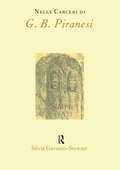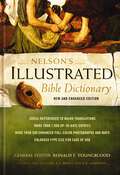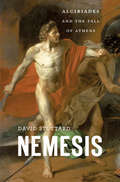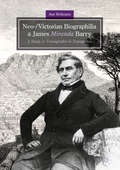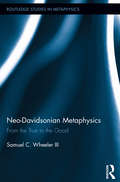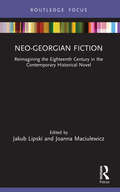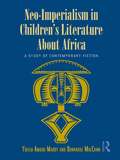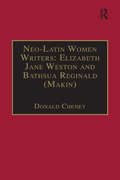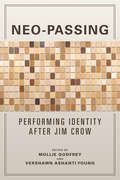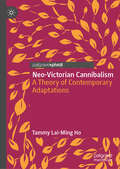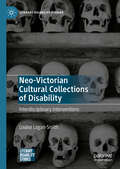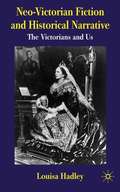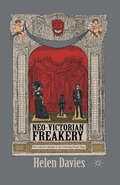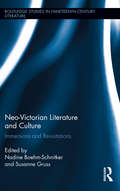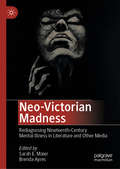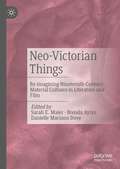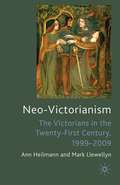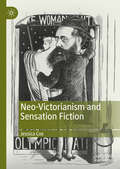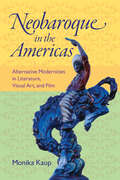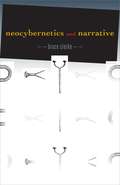- Table View
- List View
Nell Is Not Well (Word Family Readers:)
by Liza CharlesworthWhen Nell starts to feel not-so-well, her mother sends her to bed with a bell to ring in case she needs anything, in a book that teaches "-ell" words to young readers.
Nelle Carceri di G.B.Piranesi
by Silvia Gavuzzo-Stewart"This title focuses on an Italian architect and engraver of the 18th century - Piranesi. In this book it is argued that Piranesi grants a metaphorical meaning to the Carcesi - a set of etchings - in order to impriso those he saw as obstructing the arts and threatening his own freedom. In light of the growing academic interest in Italy and the re-organization of many university courses in Italian, this series aims to bring together di fferent scholarly perspectives on Italy and its culture."
Nelson's Foundational Bible Dictionary with the New King James Version Bible
by Katherine HarrisThe Bible was written for people to read, ponder, and understand. The message of God's love for humans transcends time, culture, and language. Nevertheless, readers of the Bible are often left with questions. The names sound strange to our ears, the geography is often unfamiliar, and we ask, "Who was this person? Is he mentioned somewhere else in the Bible?" "When did this happen?" "Where did it happen?" "Is this a real city?" Nelson's Foundational Bible Dictionary seeks to answer questions like these and many more. Features include: Every person mentioned in the Bible with biblical references and biographical information All animals and minerals mentioned in the Bible with definitions Modern equivalents of ancient geographical names Key theological terms with their various meanings and interpretations Common household items and occupations with cultural and historical information about life in ancient timesIn addition to the full Dictionary materials, the eBook version of Nelson’s Foundational Bible Dictionary also contains an appendix of the full text of the New King James Version Bible. All verse references in the Dictionary are linked to that verse in the Bible so that you can easily navigate between the Dictionary and Bible text.
Nelson's Illustrated Bible Dictionary: New and Enhanced Edition
by Ronald F. YoungbloodThe most comprehensive and up-to-date Bible dictionary available. With a fresh new look and updated photographs, this new and enhanced edition is a wealth of bible study information for any level of study. It includes more than 7,000 entries, plus more than 500 full-color photographs, maps, and pronunciation guides.Features include:Cross-references to all major translationsMore than 7,000 up-to-date entriesMore than 500 full-color photographs and mapsEnlarged type size for easier readingVisual Survey of the Bible from The Open Bible
Nelson's Student Bible Dictionary: A Complete Guide to Understanding the World of the Bible
by Ronald YoungbloodNelson's Student Bible Dictionary presents nearly 2,000 definitions, representing the best in biblical scholarship, in a convenient and colorful package. Photographs, illustrations, charts, maps, and topical entries invite browsing and make Bible study fun. You will want to take Nelson's Student Bible Dictionary wherever you take your Bible.Quotations are from the NKJV, but the dictionary includes references specific to the KJV, NIV, and NRSV. It can be used with any modern English translation of the Bible.
Nemesis: Alcibiades and the Fall of Athens
by David StuttardAlcibiades was one of the most dazzling figures of the Golden Age of Athens. A ward of Pericles and a friend of Socrates, he was spectacularly rich, bewitchingly handsome and charismatic, a skilled general, and a ruthless politician. He was also a serial traitor, infamous for his dizzying changes of loyalty in the Peloponnesian War. Nemesis tells the story of this extraordinary life and the turbulent world that Alcibiades set out to conquer. David Stuttard recreates ancient Athens at the height of its glory as he follows Alcibiades from childhood to political power. Outraged by Alcibiades’ celebrity lifestyle, his enemies sought every chance to undermine him. Eventually, facing a capital charge of impiety, Alcibiades escaped to the enemy, Sparta. There he traded military intelligence for safety until, suspected of seducing a Spartan queen, he was forced to flee again—this time to Greece’s long-term foes, the Persians. Miraculously, though, he engineered a recall to Athens as Supreme Commander, but—suffering a reversal—he took flight to Thrace, where he lived as a warlord. At last in Anatolia, tracked by his enemies, he died naked and alone in a hail of arrows. As he follows Alcibiades’ journeys crisscrossing the Mediterranean from mainland Greece to Syracuse, Sardis, and Byzantium, Stuttard weaves together the threads of Alcibiades’ adventures against a backdrop of cultural splendor and international chaos. Navigating often contradictory evidence, Nemesis provides a coherent and spellbinding account of a life that has gripped historians, storytellers, and artists for more than two thousand years.
Neo-/Victorian Biographilia and James Miranda Barry: A Study in Transgender and Transgenre
by Ann HeilmannSenior colonial officer from 1813 to 1859, Inspector General James Barry was a pioneering medical reformer who after his death in 1865 became the object of intense speculation when rumours arose about his sex. This cultural history of Barry’s afterlives in Victorian to contemporary (neo-Victorian) life-writing (‘biographilia’) examines the textual and performative strategies of biography, biofiction and biodrama of the last one and a half centuries. In exploring the varied reconstructions and re-imaginations of the historical personality across time, the book illustrates that the ‘real’ James Barry does not exist, any more than does the ‘faithful’ biographical, biofictional or biodramatic rendering of a life in a generically ‘stable’ and discrete form. What Barry represents and how he is represented invariably pinpoints the speculative and the performative: reflections and refractions in the looking glass of genre. Just as ‘James Miranda Barry’, as a subject of cultural inquiry, comes into being and remains in view in the act of crossing gender, so neo-Victorian life-writing constitutes itself through similar acts of boundary transgression. Transgender thus finds its most typical expression in transgenre.
Neo-Davidsonian Metaphysics: From the True to the Good (Routledge Studies in Metaphysics)
by Samuel C WheelerMuch contemporary metaphysics, moved by an apparent necessity to take reality to consist of given beings and properties, presents us with what appear to be deep problems requiring radical changes in the common sense conception of persons and the world. Contemporary meta-ethics ignores questions about logical form and formulates questions in ways that make the possibility of correct value judgments mysterious. In this book, Wheeler argues that given a Davidsonian understanding of truth, predication, and interpretation, and given a relativised version of Aristotelian essentialism compatible with Davidson’s basic thinking, many metaphysical problems are not very deep. Likewise, many philosophers' claims that common sense needs to be modified are unfounded. He argues further that a proper consideration of questions of logical form clarifies and illuminates meta-ethical questions. Although the analyses and arguments he gives are often at odds with those at which Davidson arrived, they apply the central Davidsonian insights about semantics, understanding, and interpretation.
Neo-Georgian Fiction: Reimagining the Eighteenth Century in the Contemporary Historical Novel (Routledge Focus on Literature)
by Jakub LipskiThis book contributes to the development of contemporary historical fiction studies by analysing neo-Georgian fiction, which, unlike neo-Victorian fiction, has so far received little critical attention. The essays included in this collection study the ways in which the selected twentieth- and twenty-first-century novels recreate the Georgian period in order to view its ideologies through the lens of such modern critical theories as performativity, post-colonialism, feminism or visual theories. They also demonstrate the rich repertoire of subgenres of neo-Georgian fiction, ranging from biographical fiction, epistolary novels to magical realism. The included studies of the diverse novelistic conventions used to re-contextualise the Georgian reality reflect the way we see its relevance and relation to the present and trace the indebtedness of the new forms of the contemporary novel to the traditional novelistic genres.
Neo-Imperialism in Children's Literature About Africa: A Study of Contemporary Fiction (Children's Literature and Culture #Vol. 60)
by Yulisa Amadu Maddy Donnarae MacCannIn the spirit of their last collaboration, Apartheid and Racism in South African Children's Literature, 1985-1995, Yulisa Amadu Maddy and Donnarae MacCann once again come together to expose the neo-imperialist overtones of contemporary children's fiction about Africa. Examining the portrayal of African social customs, religious philosophies, and political structures in fiction for young people, Maddy and MacCann reveal the Western biases that often infuse stories by well-known Western authors. In the book's introductory section, Maddy and MacCann offer historical information concerning Western notions of Africa as "primitive," and then present background information about the complexity of feminism in Africa and about the ongoing institutionalization of racism. The main body of the study contains critiques of the novels or short stories of eleven well-known writers, including Isabel Allende and Nancy Farmer--all demonstrating that children's literature continues to mis-represent conditions and social relations in Africa. The study concludes with a look at those short stories of Beverley Naidoo which bring insight and historical accuracy to South African conflicts and emerging solutions. Educators, literature professors, publishers, professors of Diaspora and African studies, and students of the mass media will find Maddy and MacCann’s critique of racism in the representation of Africa to be indispensible to students of multicultural literature.
Neo-Latin Women Writers: Printed Writings 1500–1640: Series I, Part Two, Volume 7 (The Early Modern Englishwoman: A Facsimile Library of Essential Works & Printed Writings, 1500-1640: Series I, Part Two #Vol. 7)
by Donald CheneyThis volume contains the work of the only two Renaissance Englishwomen known to have published collections (as opposed to compilations) of their Latin poetry. Elizabeth Jane Weston lived in Prague as a child, her stepfather being alchemist to Rudolph II. Her stepfather's disgrace, imprisonment and death in 1597 left her to try and support her destitute family household with her writing. Her facility at Latin verses and the support of Georg Martinius von Baldhoven quickly led her to international fame. For Poemata we reprint here the copy of the 1602 edition owned by the Folger Shakespeare Library and for Parthenica we reprint the copy of the 1608(?) edition owned by the Houghton Library. Bathsua Reginald (Makin) was the daughter of Henry Reginald, a London school-master. She is said to have been fluent in Greek, Latin and French and to have knowledge also of Hebrew and Syriac. Her Musa virginea Græco-Latino-Gallica of 1616 certainly confirm these claims to have been accurate. She later became tutor to Princess Elizabeth, daughter of Charles I. The work for which she is best known today is An Essay to Revive the Antient Education of Gentlewomen published in 1673. The work reproduced here is the 1616 edition of Musa virginea and as an appendix we also reprint an engraved card showing specimens of script.
Neo-Passing: Performing Identity after Jim Crow
by Mollie Godfrey Vershawn YoungAfrican Americans once passed as whites to escape the pains of racism. Today's neo-passing has pushed the old idea of passing in extraordinary new directions. A white author uses an Asian pen name; heterosexuals live "out" as gay; and, irony of ironies, whites try to pass as black. Mollie Godfrey and Vershawn Ashanti Young present essays that explore practices, performances, and texts of neo-passing in our supposedly postracial moment. The authors move from the postracial imagery of Angry Black White Boy and the issues of sexual orientation and race in ZZ Packer's short fiction to the politics of Dave Chappelle's skits as a black President George W. Bush. Together, the works reveal that the questions raised by neo-passing—questions about performing and contesting identity in relation to social norms—remain as relevant today as in the past. Contributors: Derek Adams, Christopher M. Brown, Martha J. Cutter, Marcia Alesan Dawkins, Michele Elam, Alisha Gaines, Jennifer Glaser, Allyson Hobbs, Brandon J. Manning, Loran Marsan, Lara Narcisi, Eden Osucha, Gayle Wald, and Deborah Elizabeth Whaley
Neo-Victorian Cannibalism: A Theory Of Contemporary Adaptations
by Tammy Lai-Ming HoThis Pivot examines a body of contemporary neo-Victorian novels whose uneasy relationship with the past can be theorised in terms of aggressive eating, including cannibalism. Not only is the imagery of eating repeatedly used by critics to comprehend neo-Victorian literature, the theme of cannibalism itself also appears overtly or implicitly in a number of the novels and their Victorian prototypes, thereby mirroring the cannibalistic relationship between the contemporary and the Victorian. <P><P>Tammy Lai-Ming Ho argues that aggressive eating or cannibalism can be seen as a pathological and defining characteristic of neo-Victorian fiction, demonstrating how cannibalism provides a framework for understanding the genre’s origin, its conflicted, ambivalent and violent relationship with its Victorian predecessors and the grotesque and gothic effects that it generates in its fiction.
Neo-Victorian Cultural Collections of Disability: Interdisciplinary Interventions (Literary Disability Studies)
by Louise Logan-SmithThis book offers new readings and interpretations of the non-normative narratives of ‘freak show’ performers in the Victorian period as they have been reimagined by contemporary fictions, museum exhibitions and other aspects of the heritage experience. The growth of scholarly interest in institutional histories has been mapped by a surge of neo-Victorian fiction about historical performers with disabilities, supported by scholarship in response to these representations. This study offers the first extensive analysis of the continued display of the bodies and artefacts of historical figures linked to the freak show, and the significant theoretical connections between these displays and broader cultural and fictional representations. It argues that museum displays, archives and fictional adaptations intersect through a much more complex and intriguing dialogue than has previously been identified, shedding light on the way in which historical disability functions in the twenty-first century.
Neo-Victorian Fiction and Historical Narrative
by Louisa HadleyPlacing the popular genre of neo-Victorian fiction within the context of the contemporary cultural fascination with the Victorians, this book argues that these novels are distinguished by a commitment to historical specificity and understands them within their contemporary context and the context of Victorian historical and literary narratives.
Neo-Victorian Freakery: The Cultural Afterlife of the Victorian Freak Show
by Helen DaviesNeo-Victorian Freakery explores the way in which contemporary fiction, film, and television has revisited the lives of nineteenth-century freak show performers. It locates the neo-Victorian freak show as a crucial forum for debating the politics of disability, gender, sexuality and race within the genre more broadly.
Neo-Victorian Literature and Culture: Immersions and Revisitations (Routledge Studies in Nineteenth Century Literature)
by Nadine Boehm-Schnitker Susanne GrussThis book provides a comprehensive reflection of the processes of canonization, (un)pleasurable consumption and the emerging predominance of topics and theoretical concerns in neo-Victorianism. The repetitions and reiterations of the Victorian in contemporary culture document an unbroken fascination with the histories, technologies and achievements, as well as the injustices and atrocities, of the nineteenth century. They also reveal that, in many ways, contemporary identities are constructed through a Victorian mirror image fabricated by the desires, imaginings and critical interests of the present. Providing analyses of current negotiations of nineteenth-century texts, discourses and traumas, this volume explores the contemporary commodification and nostalgic recreation of the past. It brings together critical perspectives of experts in the fields of Victorian literature and culture, contemporary literature, and neo-Victorianism, with contributions by leading scholars in the field including Rosario Arias, Cora Kaplan, Elizabeth Ho, Marie-Luise Kohlke and Sally Shuttleworth. Neo-Victorian Literature and Culture interrogates current fashions in neo-Victorianism and their ideological leanings, the resurrection of cultural icons, and the reasons behind our relationship with and immersion in Victorian culture.
Neo-Victorian Madness: Rediagnosing Nineteenth-Century Mental Illness in Literature and Other Media
by Brenda Ayres Sarah E. MaierNeo-Victorian Madness: Rediagnosing Nineteenth-Century Mental Illness in Literature and Other Media investigates contemporary fiction, cinema and television shows set in the Victorian period that depict mad murderers, lunatic doctors, social dis/ease and madhouses as if many Victorians were “mad.” Such portraits demand a “rediagnosing” of mental illness that was often reduced to only female hysteria or a general malaise in nineteenth-century renditions. This collection of essays explores questions of neo-Victorian representations of moral insanity, mental illness, disturbed psyches or non-normative imaginings as well as considers the important issues of legal righteousness, social responsibility or methods of restraint and corrupt incarcerations. The chapters investigate the self-conscious re-visions, legacies and lessons of nineteenth-century discourses of madness and/or those persons presumed mad rediagnosed by present-day (neo-Victorian) representations informed by post-nineteenth-century psychological insights.
Neo-Victorian Things: Re-imagining Nineteenth-Century Material Cultures in Literature and Film
by Brenda Ayres Sarah E. Maier Danielle Mariann DoveNeo-Victorian Things: Re-Imagining Nineteenth-Century Material Cultures in Literature and Film is the first volume to focus solely on the replication, reconstruction, and re-presentation of Victorian things. It investigates the role of materiality in contemporary returns to the past as a means of assessing the function of things in remembering, revisioning, and/or reimagining the nineteenth century. Examining iterations of material culture in literature, film and popular television series, this volume offers a reconsideration of nineteenth-century things and the neo-Victorian cultural forms that they have inspired, animated, and even haunted. By turning to new and relatively underexplored strands of neo-Victorian materiality—including opium paraphernalia, slave ships, clothing, and biographical objects—and interrogating the critical role such objects play in reconstructing the past, this volume offers ways of thinking about how mis/apprehensions of material culture in the nineteenth century continue to shape our present understanding of things.
Neo-Victorian Young Adult Narratives
by Sarah E. MaierNeo-Victorian Young Adult Narratives examines the neo-Victorian themes and motifs currently appearing in young adult fiction—specifically addressing the themes of authorship, sexuality, and criminality in the context of the Victorian age in British and American cultures. This book explicates the complicated relationship between the Victorian past and the turn to Victorian modes of thought on literature, history, and morality. Additionally, Sarah E. Maier aims to determine if the appeal of neo-Victorian young adult fiction rests in or resists nostalgia, parody, and revision. Given the overwhelming prevalence of the Victorian in the young adult genres of biofiction, juvenile writings, gothic, sensation, mystery, and crime fiction, there is much to investigate in terms of the friction between the past and the present.
Neo-Victorianism
by Ann Heilmann Mark LlewellynThis field-defining book offers an interpretation of the recent figurations of neo-Victorianism published over the last ten years. Using a range of critical and cultural viewpoints, it highlights the problematic nature of this 'new' genre and its relationship to re-interpretative critical perspectives on the nineteenth century.
Neo-Victorianism and Sensation Fiction
by Jessica CoxThis book represents the first full-length study of the relationship between neo-Victorianism and nineteenth-century sensation fiction. It examines the diverse and multiple legacies of Victorian popular fiction by authors such as Wilkie Collins and Mary Elizabeth Braddon, tracing their influence on a range of genres and works, including detective fiction, YA writing, Gothic literature, and stage and screen adaptations. In doing so, it forces a reappraisal of critical understandings of neo-Victorianism in terms of its origins and meanings, as well as offering an important critical intervention in popular fiction studies. The work traces the afterlife of Victorian sensation fiction, taking in the neo-Gothic writing of Daphne du Maurier and Victoria Holt, contemporary popular historical detective and YA fiction by authors including Elizabeth Peters and Philip Pullman, and the literary fiction of writers such as Joanne Harris and Charles Palliser. The work will appeal to scholars and students of Victorian fiction, neo-Victorianism, and popular culture alike.
Neobaroque in the Americas: Alternative Modernities in Literature, Visual Art, and Film (New World Studies)
by Monika KaupIn a comparative and interdisciplinary analysis of modern and postmodern literature, film, art, and visual culture, Monika Kaup examines the twentieth century's recovery of the baroque within a hemispheric framework embracing North America, Latin America, and U.S. Latino/a culture. As "neobaroque" comes to the forefront of New World studies, attention to transcultural dynamics is overturning the traditional scholarship that confined the baroque to a specific period, class, and ideology in the seventeenth century. Reflecting on the rich, nonlinear genealogy of baroque expression, Neobaroque in the Americas envisions the baroque as an anti-proprietary expression that brings together seemingly disparate writers and artists and contributes to the new studies in global modernity.
Neocybernetics and Narrative (Posthumanities #29)
by Bruce ClarkeNeocybernetics and Narrative opens a new chapter in Bruce Clarke&’s project of rethinking narrative and media through systems theory. Reconceiving interrelations among subjects, media, significations, and the social, this study demonstrates second-order systems theory&’s potential to provide fresh insights into the familiar topics of media studies and narrative theory. A pioneer of systems narratology, Clarke offers readers a synthesis of the neocybernetic theories of cognition formulated by biologists Humberto Maturana and Francisco Varela, incubated by cyberneticist Heinz von Foerster, and cultivated in Niklas Luhmann&’s social systems theory. From this foundation, he interrogates media theory and narrative theory through a critique of information theory in favor of autopoietic conceptions of cognition. Clarke&’s purview includes examinations of novels (Mrs. Dalloway and Mind of My Mind), movies (Avatar, Memento, and Eternal Sunshine of the Spotless Mind), and even Aramis, Bruno Latour&’s idiosyncratic meditation on a failed plan for an automated subway. Clarke declares the era of the cyborg to have ended, laid to rest as the ontology of technical objects is brought into differential coordination with operations of living, psychic, and social systems. The second-order discourse of cognition destabilizes the usual sense of cognition as conscious awareness, revealing the possibility of nonconscious and nonhuman forms of sentience.
Neoliberal Health Organizing: Communication, Meaning, and Politics (Critical Cultural Studies in Global Health Communication #2)
by Mohan J DuttaMohan J Dutta closely interrogates the communicative forms and practices that have been central to the establishment of neoliberal governance. In particular, he examines cultural discourses of health in relationship to the market and the health implications of these cultural discourses. Using examples from around the world, he explores the roles of public-private partnerships, NGOs, militaries, and new technologies in reinforcing the link between market and health. Identifying the taken-for-granted assumptions that constitute the foundations of global neoliberal organizing, he offers an alternative strategy for a grassroots-driven participatory form of global organizing of health. This inventive theoretical volume speaks to those in critical communication, in health research, in social policy, and in contemporary political economy studies.

